Expert Tips For Growing Yew: This Native Provides Form And Structure Throughout The Year

TREES > YEW

Elizabeth is a Permaculture Garden Designer, Sustainability Consultant and Professional Writer, working as an advocate for positive change. She graduated from the University of St. Andrews with an MA in English and Philosophy and obtained a Diploma in Applied Permaculture Design from the Permaculture Association.
Reviewed By COLIN SKELLY

Colin is a Horticulturist and Horticultural Consultant with experience in a range of practical and managerial roles across heritage, commercial and public horticulture. He holds the Royal Horticultural Society’s Master of Horticulture award and has a particular interest in horticultural ecology and naturalistic planting for habitat and climate resilience.
Contributions from BILL IRVING

Bill is the Director of Boxtrees Nursery, a specialist online retailer in Suffolk specialising in hedging and topiary plants including Buxus, Taxus, Ilex and more.

Bunny Guinness is an award-winning Landscape Architect with more than 35 years' experience. Bunny has worked in TV & Radio sharing her extensive knowledge of all things horticulture - including as a panelist on BBC Radio 4 Gardeners' Question Time. She was awarded an Honorary Doctorate by Birmingham City University in 2009 and has designed six Gold-Medal winning gardens at RHS Chelsea Flower Shows since 1994.

Todd Longstaffe-Gowan is an award-winning Landscape Designer with almost 25 years of experience. He has designed spaces for the National Trust, English Heritage and many other private and public landscapes. Todd is also a Garden Advisor for the Historic Garden Palaces and the Crown Estate Paving Commission in Regent’s Park and a Trustee of the Chelsea Physic Garden. He is the author of several books.
IN THIS GUIDE
YEW GUIDES
Yews are one of our native trees, sometimes taking a shrub-like form.
They are attractive coniferous evergreens that can bear red berry-like fruits which are beloved by a range of wildlife as well as having ornamental appeal.
In this guide we have collaborated with Bill Irving, the Director of Boxtrees Nursery which is a specialist Yew grower in Suffolk.
“Yew trees are great garden plants,” says Bill.
“They provide valuable form and structure throughout the year and look equally at home in traditional English country gardens and modern garden designs.
“They are reliable and adaptable plants that tolerate a variety of growing conditions and aspects.”
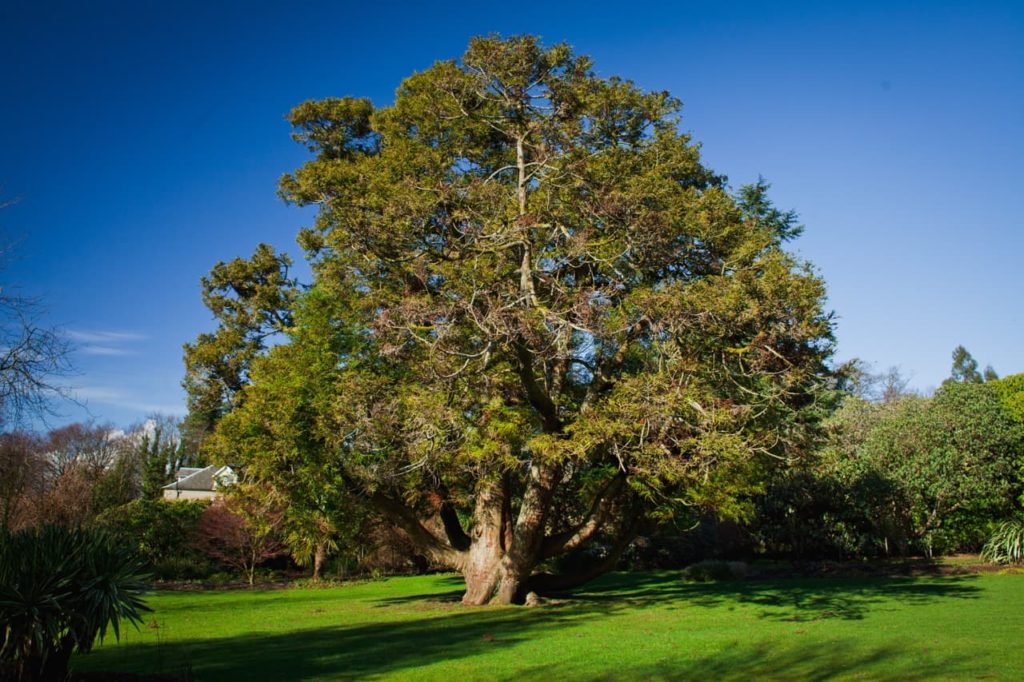
Though they are slow-growing, yews are remarkably unchallenging plants, coping with a wide range of conditions.
They are versatile too and can be used in a wide range of different ways in a garden.
Often used as hedging plants, these trees can also have numerous other applications.
“I’ve planted many yews, most of which I hope will survive me and many generations to come,” shares Todd Longstaffe-Gowan, a Landscape Architect.
Overview
| Botanical Name | Taxus baccata |
| Common Name(s) | Yew |
| Plant Type | Tree / Shrub |
| Native Area | Europe including Britain & Ireland |
| Hardiness Rating | H7 |
| Foliage | Evergreen |
| Flowers | Insignificant |
| When To Plant | November to March |
| When To Prune | Late summer to early autumn |
Sunlight
Preferred
Full Sun, Partial Shade, Full Shade
Exposure
Exposed or Sheltered
Size
Height
0.5 – 8M
Spread
0.5 – 4M
Bloom Time
March to April
Soil
Preferred
Most fertile soils
Moisture
Well-drained
pH
Any
Yew, botanically known as Taxus baccata, is a native tree in the Taxaceae plant family that carries an enormous weight of symbolism in the British Isles.1Yew – Taxus baccata. (n.d.). Kew Royal Botanic Gardens. Retrieved March 30, 2023, from https://www.kew.org/plants/yew
They are often considered to be a symbol of both death and immortality.2Yew (Taxus baccata). (n.d.). Woodland Trust. Retrieved March 30, 2023, from https://www.woodlandtrust.org.uk/trees-woods-and-wildlife/british-trees/a-z-of-british-trees/yew/#:~:text=Yew%20trees%20were%20used%20as,Palm%20Sunday%20and%20at%20funerals.
They are very long-lived, often found in churchyards.3Callery, S. (2020, June 25). Why do so many English churchyards have yews? British Guild of Tourist Guides. Retrieved March 30, 2023, from https://britainsbestguides.org/blogs/why-do-so-many-english-churchyards-have-yews/#:~:text=There%20was%20another%20reason%20for,also%20suggested%20rebirth%20and%20resurrection.
Yews, as native trees, are extremely beneficial for garden wildlife.
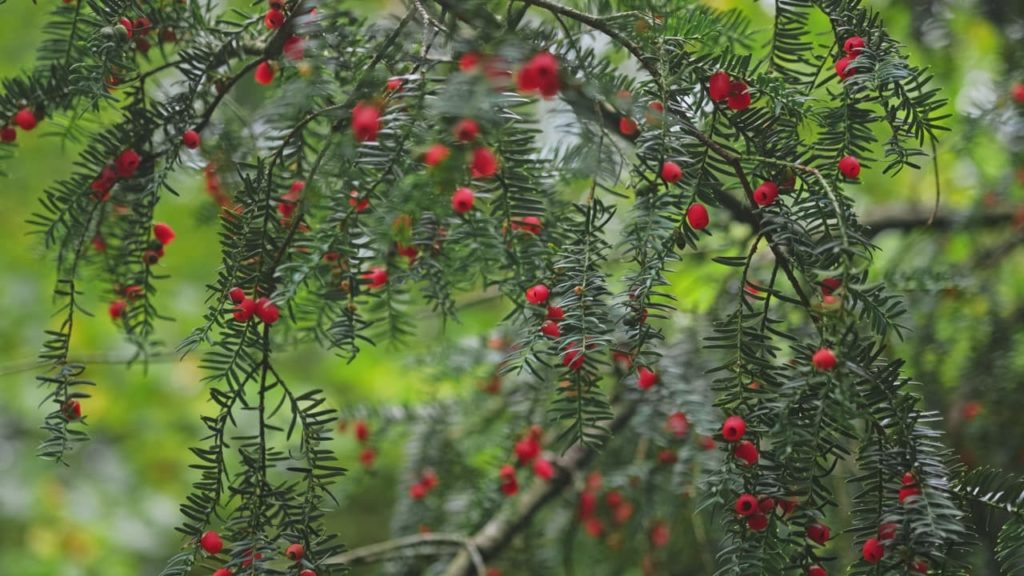
Therefore, they can be a great choice for anyone who would like to create a wildlife-friendly garden to appeal to garden creatures all year round.
The dense growth of yew trees provides shelter and habitat year-round and the fruits created on female yews are a food source for birds and small mammals during autumn and winter.
Yews are one of only a very small number of evergreens that are native to some or all parts of the British Isles.4Barkham, P. (2019b, September 28). Britain’s ancient yews: mystical, magnificent – and unprotected. The Guardian. Retrieved March 30, 2023, from https://www.theguardian.com/environment/2019/sep/28/britain-ancient-yews-mystical-magnificent-and-unprotected
This makes them a very popular choice for many gardeners.
Common Varieties
When choosing a yew tree for your garden, it is important to think about why you wish to grow it.

Think about whether you are looking for a stand-alone specimen to grow relatively naturally, a plant for topiary or hedging, a taller tree, a shrub or a ground-covering plant.
Some yew varieties with an Award of Garden Merit from the RHS are:
T. baccata ‘Semperaurea’

This yew is a large shrub that eventually grows wider than it is tall, with a height and spread of up to 4m or so.
It has erect branches and golden-yellow foliage that turns orange in winter.
T. baccata ‘Fastigiata Aureomarginata’
Golden Irish yew is another large but compact evergreen shrub.
When young, it tends to have a columnar form that broadens out as it ages.
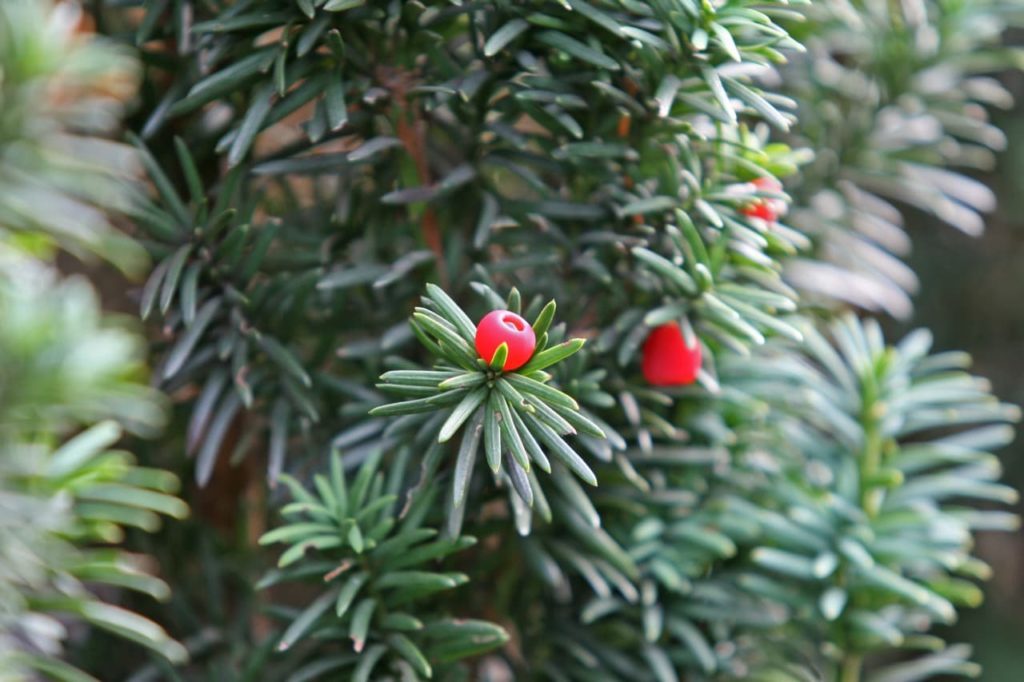
Its branches are upright and the foliage is yellowish towards the tips and margins.
This yew also grows up to around 4m tall but typically grows no more than 2.5m wide.
T. baccata ‘Repandens’
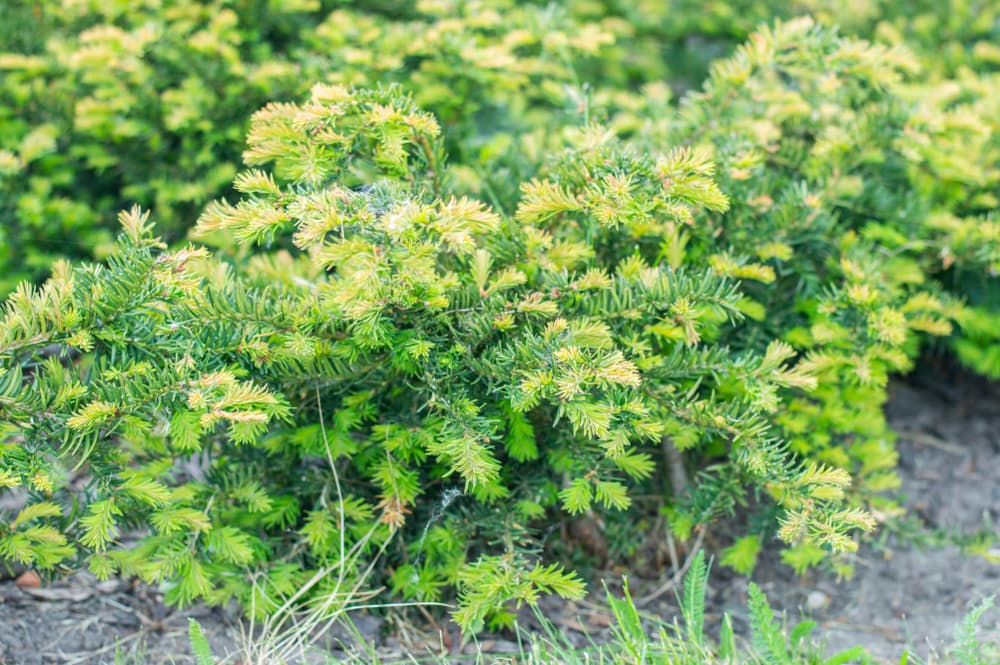
This is a ground-covering yew that grows no more than 0.1-0.5m in height but which can spread out over 2.5-4m.
It is suitable for low hedging for formal gardens, bed edging or for the front of a border.
T. baccata ‘Fastigiata Standishii’

Another Irish yew, this option is a yew with a columnar form, erect branches and rich, yellow-green foliage.
It will tend to grow around 1-1.5m in height, spreading to 0.5-1m wide.
T. baccata ‘Repens Aurea’
Another low-growing and spreading yew, this option grows to around 0.5-1m in height, ultimately spreading to about 1-1.5m.
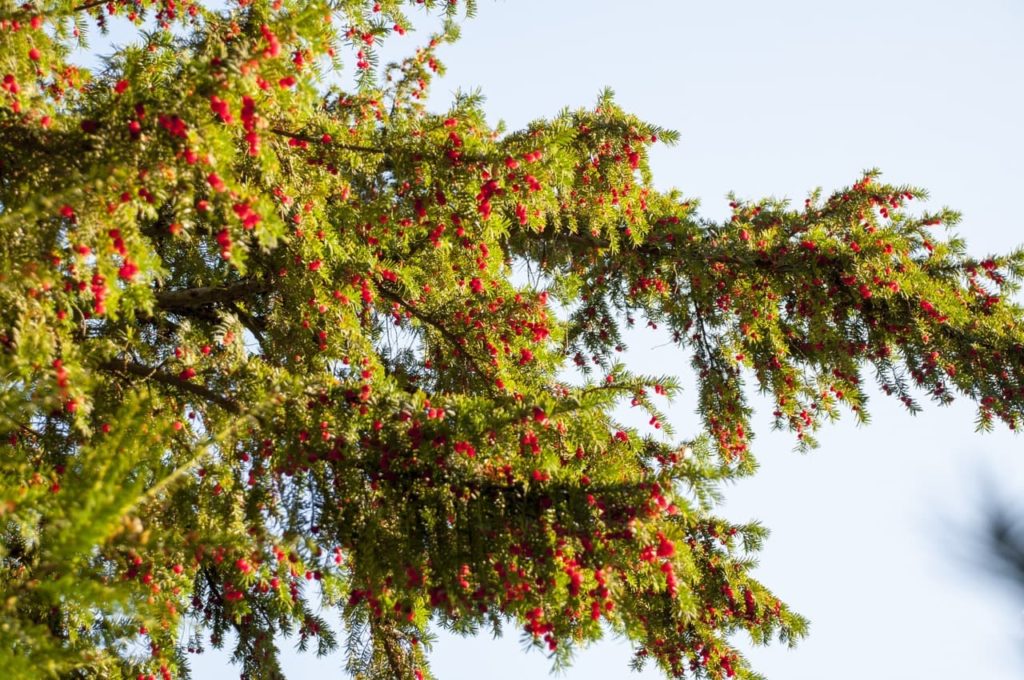
It has narrow, yellow-edged young leaves which later turn creamy in hue as they age.
Yews can be very different from one another in terms of their size and form, so it is important to research the shape, growth habits and properties of any yew variety that you are considering.
How To Grow A Yew Tree
Once you have considered how you might use a yew tree in your garden design, it is important to make sure that you can meet the environmental requirements of these trees or shrubs.
This means understanding the conditions that yews like and recognising the conditions in different locations in your garden.
Preferred Location
The great news is that yews can work well in many different situations and in a range of different soils.
They can grow well in anything from full sun to deep shade in an exposed or sheltered location.
Any soil type can work for growing yews, as long as it is well-drained and does not become waterlogged.
These trees or shrubs are also unfussy when it comes to soil pH, though soil on the alkaline side is ideal.

All of this means that yew trees can be an excellent choice for many British gardens.
Yew can be used in a wide range of locations and for a wide range of purposes.
For example, you might grow yew trees as:
- Stand-alone natural trees or shrubs in a garden.
- Topiary or neatly clipped hedges.
- More natural, wildlife-friendly and informal hedgerows.
- In pots in a container garden.
- As groundcover plants.
“Using baseless pots is something we do quite often, as you can grow plants like Taxus baccata in them, which don’t like being in a pot long term,” shares award-winning Landscape Architect Bunny Guinness.
“You can add these pots to courtyards or underneath other trees. It helps to add something architectural to your outdoor places.”
Planting Yew
Before planting, wherever you have chosen to incorporate it into your garden design, be sure to prepare the area by making sure that it is rich in organic matter.
“Preparation and establishment are the keys to growing strong healthy plants,” Bill says.
“Prepare the ground well, plant when conditions are good and observe the plants regularly to keep a check on establishment and health.”
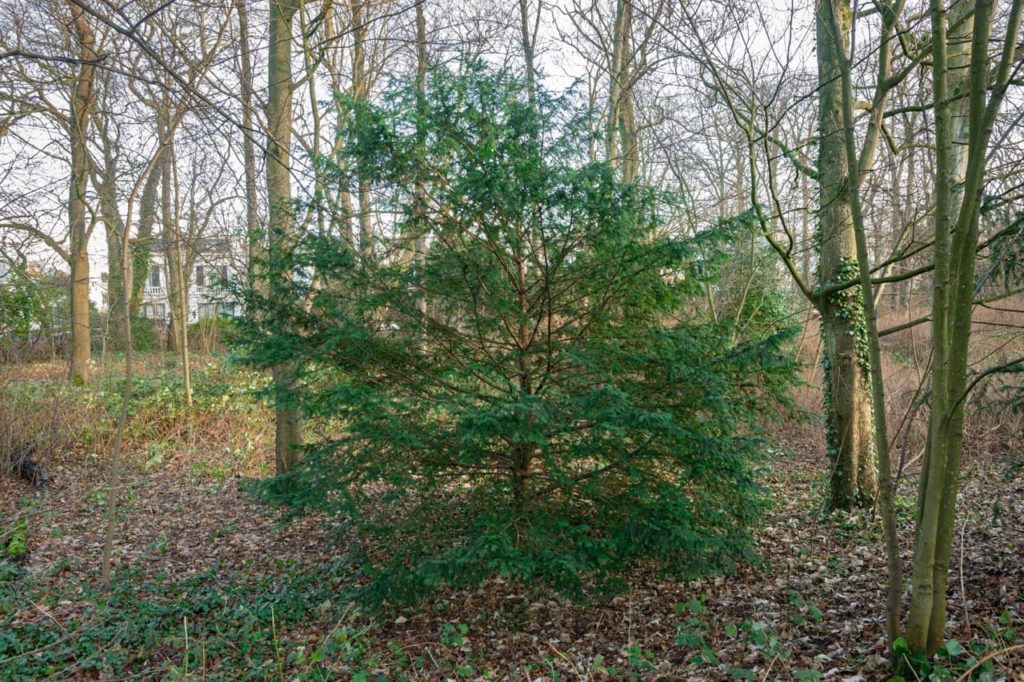
Yews are typically purchased either as bare-root specimens or as container-grown trees.
They are best planted either in the autumn or early winter (October to December) or in early spring (March) for the best results, whether you are planting an individual yew or creating a hedge.
“Don’t be tempted to plant too closely,” says Bill.
“Poor air circulation can lead to more risk of fungal disease.”
Yew Hedging
As mentioned above, you can grow yew as hedging in both formal, neat and clipped forms and in more informal hedgerow designs, perhaps alongside a number of other native tree and shrub species.
One of the benefits of using yew for hedging is that, as a slow-growing plant, it will not typically need to be pruned or trimmed anywhere near as frequently as many other conifers and evergreens.
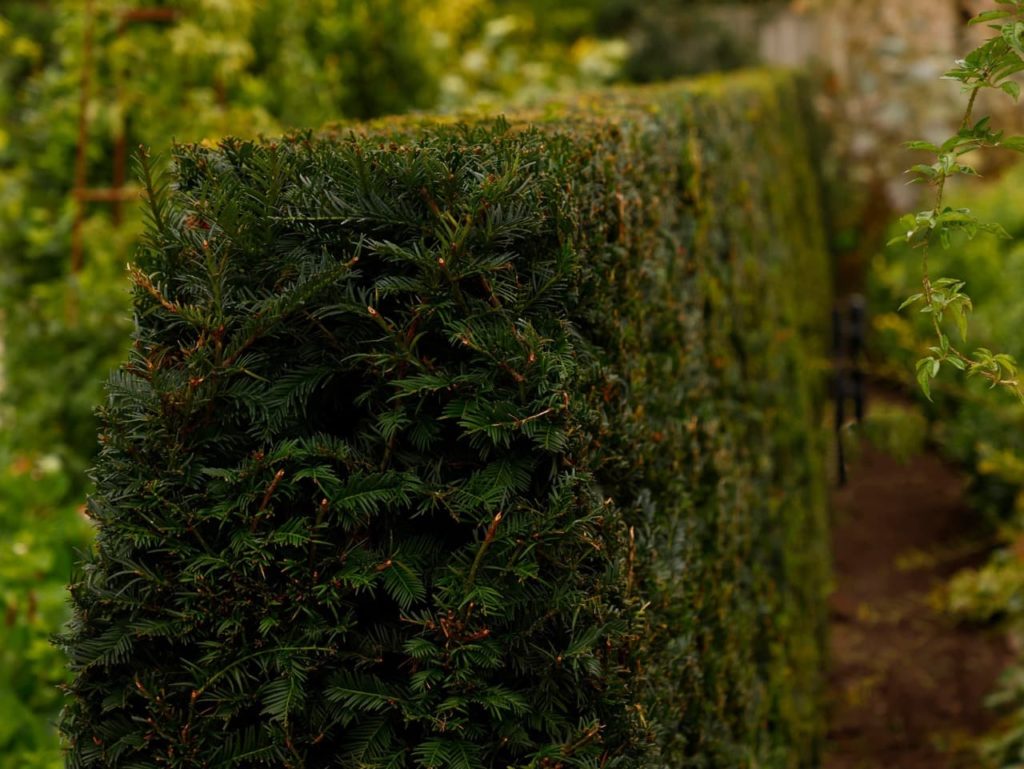
Yew trees make excellent dense formal hedges and are a popular choice for manicured spaces.
“Dense formal hedges may require additional cuts through the summer and autumn,” explains Bill.
“Yew can also regenerate from old wood if any renovation is required.”
“If your Yew hedge outgrows its original intended dimensions, you can hard prune it back in stages,” adds Colin Skelly, a Horticultural Consultant.
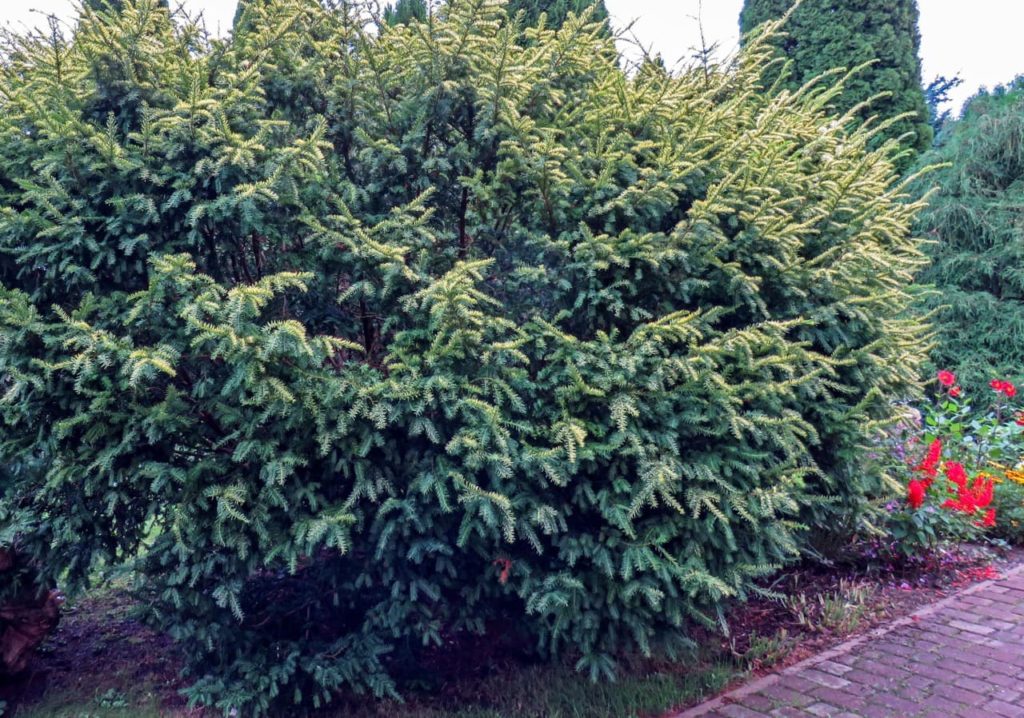
“In year 1, take one side of the hedge back to bare wood where you want growth to resume from.
“When this has begun to regrow (perhaps year 2 or 3) then you can be confident in cutting back side 2 or the top and follow the same guidance for the next cut.”
However, when left less clipped and allowed to grow naturally, yew can also be a great addition to a hedgerow for wildlife.
Of course, since these trees are slow-growing, this also means that a hedge could take much longer to establish, but yew trees can still put on 30cm of growth annually in good conditions.
Yew hedging is typically trimmed once a year, usually in the late summer.
Propagation Methods
Yew trees can be grown from seed, but the most common and easiest method of propagation is by means of cuttings.
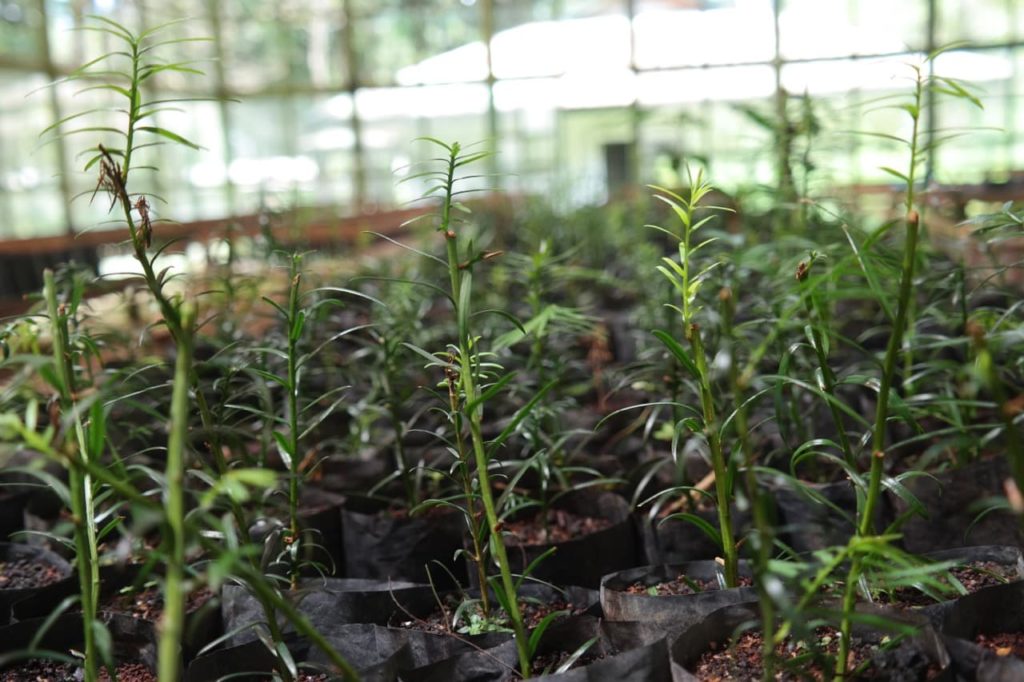
You can take softwood cuttings, which is a job undertaken in early summer, or you can take semi-ripe cuttings from late summer to early autumn.
Cuttings provide offspring that are identical to the parent yew.
Yew Tree Care Guidelines
Yews are great low-maintenance plants and any maintenance, such as neat trimming or topiary techniques, will be optional.
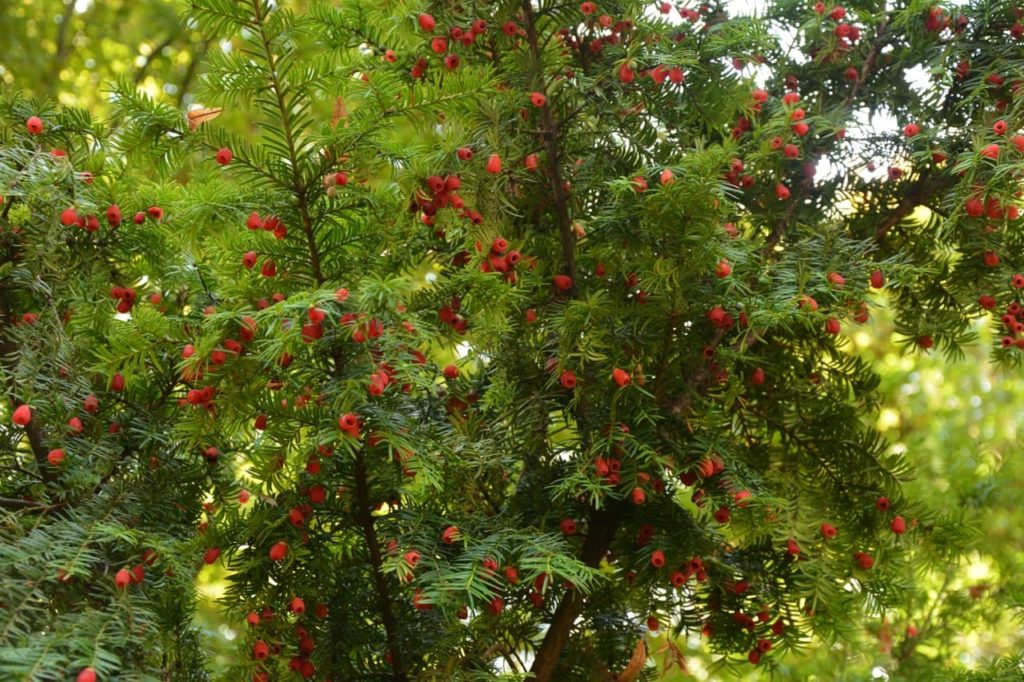
These are not fussy plants and they have very few extremely strict requirements.
Light
Light, as we have already discussed, is not an area where yews are fussy at all.
These trees or shrubs can grow just as well in deep shade as they can in partial shade or full sun.
Soil Requirements
Yews are also tolerant of soil type and characteristics.
They can grow in any soil type except a heavy clay that has not been amended at all, as the only stipulation is that the soil must drain freely and cannot become waterlogged.
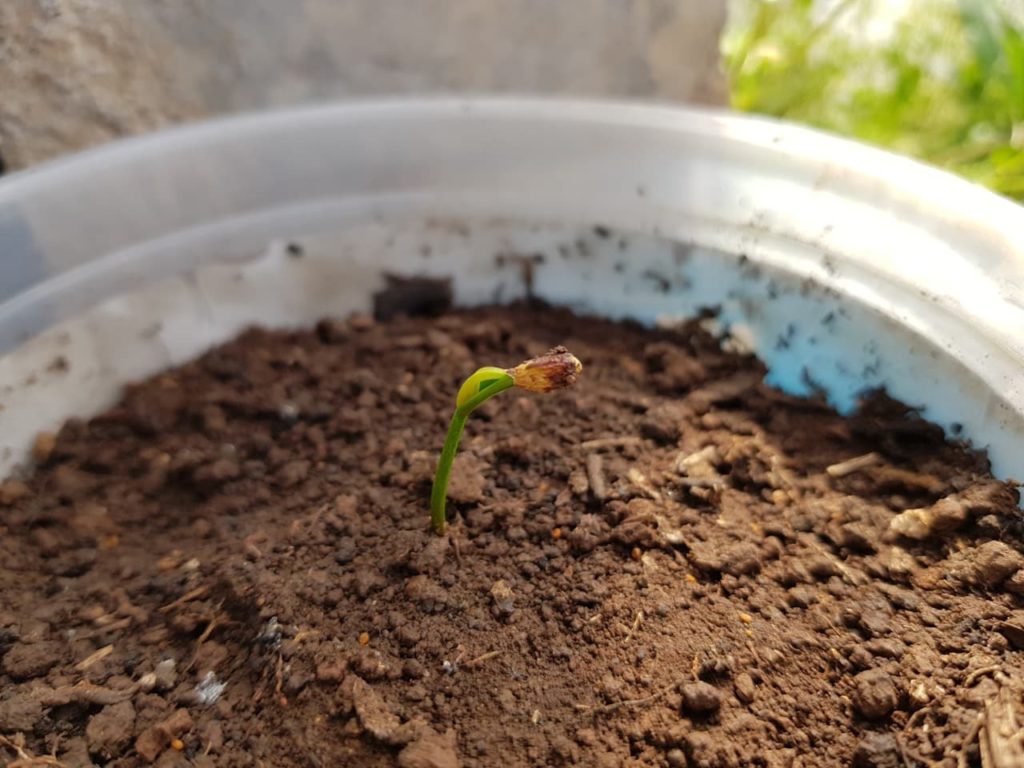
However, even a heavy clay can be suitable for growing yew if it is amended with plenty of organic matter to improve drainage.
Any pH is fine too and even though more acidic soils are not ideal, they are still tolerated by these adaptable plants.
Watering
Yews should usually be watered during prolonged dry spells while they are becoming established or when they are grown in containers.
Otherwise, natural rainfall should be sufficient.
Feeding
These strong trees or shrubs do not typically need additional feeding, as long as they are grown in reasonably nutrient-rich healthy soil.
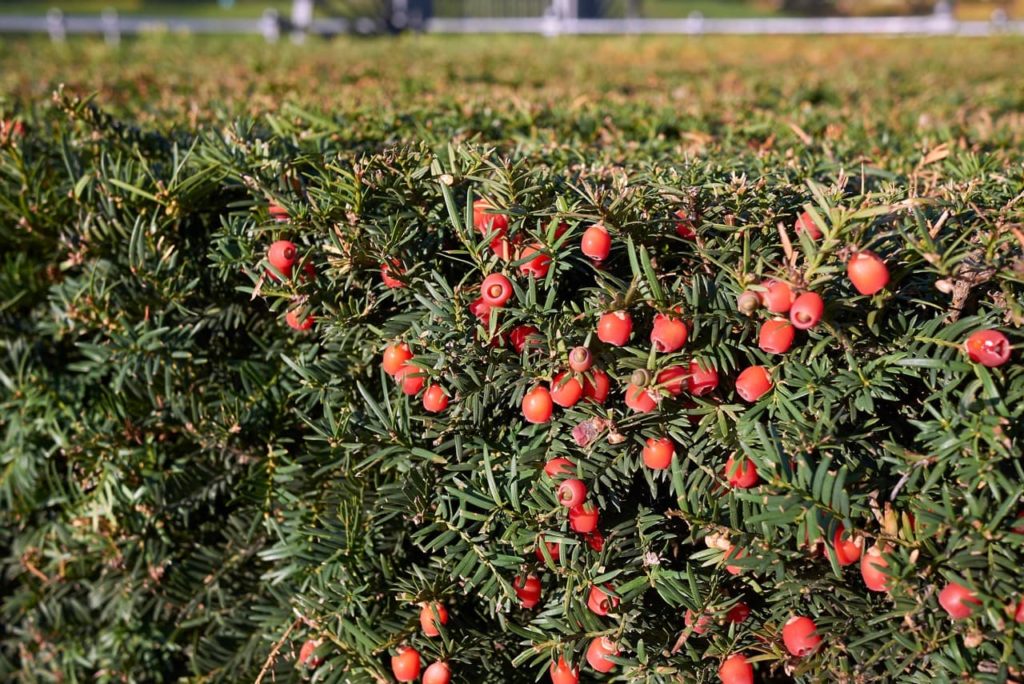
However, in containers and elsewhere if the growth seems poor, you can consider applying an organic fertiliser in late winter.
References
- 1Yew – Taxus baccata. (n.d.). Kew Royal Botanic Gardens. Retrieved March 30, 2023, from https://www.kew.org/plants/yew
- 2Yew (Taxus baccata). (n.d.). Woodland Trust. Retrieved March 30, 2023, from https://www.woodlandtrust.org.uk/trees-woods-and-wildlife/british-trees/a-z-of-british-trees/yew/#:~:text=Yew%20trees%20were%20used%20as,Palm%20Sunday%20and%20at%20funerals.
- 3Callery, S. (2020, June 25). Why do so many English churchyards have yews? British Guild of Tourist Guides. Retrieved March 30, 2023, from https://britainsbestguides.org/blogs/why-do-so-many-english-churchyards-have-yews/#:~:text=There%20was%20another%20reason%20for,also%20suggested%20rebirth%20and%20resurrection.
- 4Barkham, P. (2019b, September 28). Britain’s ancient yews: mystical, magnificent – and unprotected. The Guardian. Retrieved March 30, 2023, from https://www.theguardian.com/environment/2019/sep/28/britain-ancient-yews-mystical-magnificent-and-unprotected
